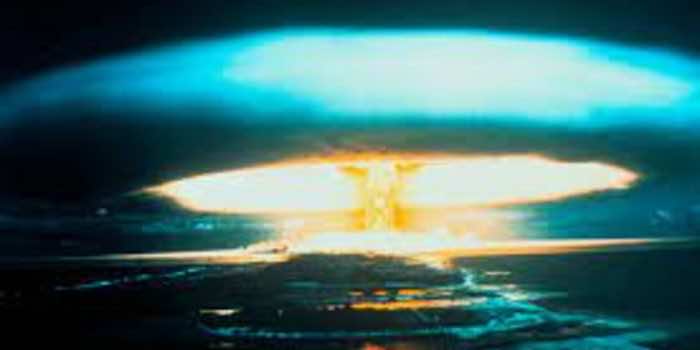Researchers have been studying the consequences of a nuclear conflict. One of the direst results is the possibility of a prolonged climactic cooling event referred to as “nuclear winter.”
“In a nuclear war, bombs targeted on cities and industrial areas would start firestorms, injecting large amounts of soot into the upper atmosphere, which would spread globally and rapidly cool the planet,” researchers explain in a new study. “Such soot loadings would cause decadal disruptions in Earth’s climate, which would impact food production systems on land and in the oceans.”

The study simulated six nuclear war scenarios, where each produced multiple levels of soot in the stratosphere. Five scenarios modeled different scales of a nuclear conflict between India and Pakistan, while the sixth model simulated a global nuclear war between the US and Russia.
Each model estimated the climate effects of soot in the atmosphere. These climate changes were then fed into agriculture models designed to calculate reductions in major crop productions, like wheat, rice, and corn. Ultimately, the study concluded that those crop reductions meant losses in calories and the researchers could then estimate how many people would theoretically fall a victim to famine in the months, or years, following a nuclear war.
“Although the likelihood of such a war is low, a 14.8 °C (58.6 °F) global cooling (an ice age) would ensue within one to two years after the nuclear blasts,” explained Deepak Ray, an environmental scientist commenting on the new modeling. “Even if half the livestock feed calories were diverted and consumed as human food, and all food wastage was also consumed, the authors calculate a shortfall in calories of close to 74% in this extreme 150 Tg scenario.”

In extreme nuclear aftermath, the model states that all international trade of food would stop which will leave each country dependent on its own ability to produce calories for its people.
The one country seemingly most protected from the global catastrophe predicted in the modeling is Australia. Neighbor New Zealand was also modeled to be relatively secure in the most extreme scenario modeled.
Of course, there are limitations to this model. The scenarios simulated focus solely on the impact of nuclear winter on current caloric crop production. While this calorie deficit cannot be offset by livestock or increases in aquatic farming, the researchers do speculate on the potential for alternative food sources being introduced, such as pivoting to producing food requiring little to no sunlight.
“If nuclear weapons exist, they can be used, and the world has come close to nuclear war several times,” Robock stressed. “Banning nuclear weapons is the only long-term solution. The five-year-old UN Treaty on the Prohibition of Nuclear Weapons has been ratified by 66 nations, but none of the nine nuclear states. Our work makes clear that it is time for those nine states to listen to science and the rest of the world and sign this treaty.”
The new study was published in the journal Nature Food.


